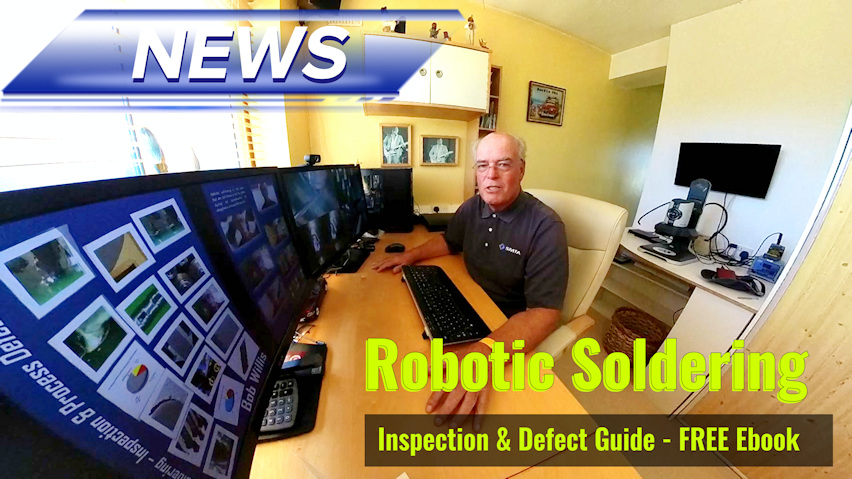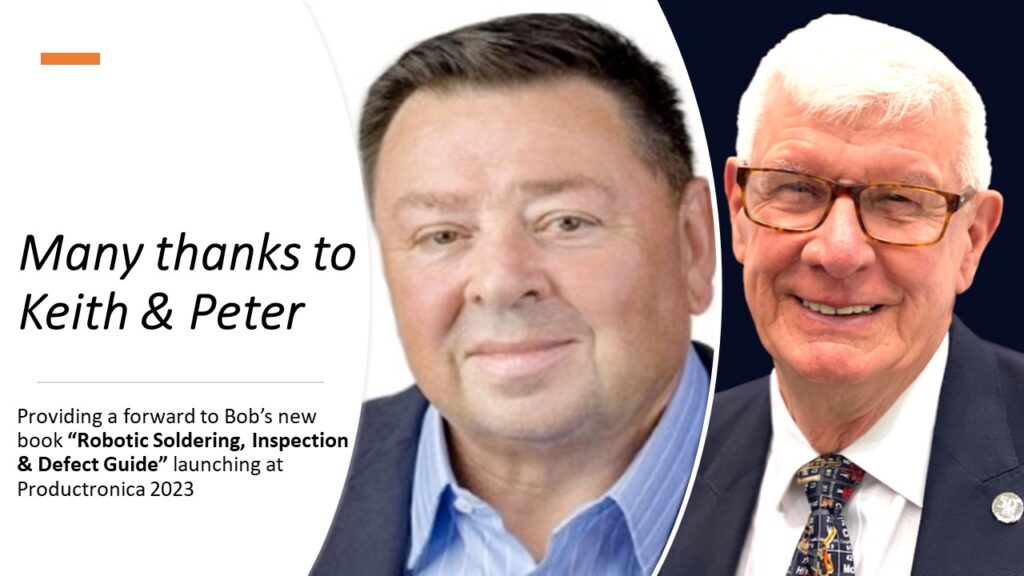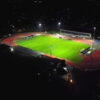
In his final year attending Productronica in Germany, recently retired Bob Willis will be hosting a technical session on Thursday 16th November 10.00am in Hall A1 in partnership with WNIE
He will be joined by engineers to discuss the growing interest in Robotic Soldering Applications & Low Temperature Soldering and some of the pitfalls in implementing the technology. In addition all visitors can download a copy of Bob’s new book and all of his past titles FREE with a small charity donation

The 60 min session will be split evening between the two topics with two groups of panellists
“There have been lots of discussion on the potential use of soldering robots in the Printed Circuit Board (PCB) assembly but in all honesty, they have already been used widely over the past 10 years. I was also very interested recently to see robots being used to load and unload full size process panels on a vertical solder levelling systems in a PCB manufacturing facility. That’s not a fun job hot and hard work so why not let a robot take the strain. A recent study confirmed an increase of 140,000 new installation in China during 2019. In Europe the leading country in terms of new installations was Germany with 28,000 which was nearly double Italy for the same year. Now of course these are not all for electronic assembly but it’s an indication of the appetite for new technology and the number of suppliers.”
The use of Low Temperature Solders (LTS) is also not new, however, its wide spread use in PCB assembly has been limited. Tin/Bismuth/Silver was considered, then dismissed during the early introduction of lead-free as the alloy options were more brittle, so Sn/Ag/Cu (SAC) became the go to alloy avoiding lead but at much higher process temperatures and significant cost. Japan did use LTS materials in many consumer and office based products during their very successful introduction of lead-free technology between 2000-2004. Suppliers have been working hard to find the best combination of SnBi and other elements to balance the reliability of the final joints, its peak reflow temperature and material cost. Some suppliers moving to more reliable versions of the LTS products but at high soldering temperatures
So what are the benefits of LTS to our printed circuit board industry and designers? Well potentially less issues with moisture as soldering temperature can be reduced. Less impact on solderability of selected surface finishes like Tin and Organic Solderability Preservative (OSP) during multi step soldering and less delamination and warpage issues.
The iNEMI 2017 Roadmap indicated the share of the solder paste market for LTS would be 12% in 2022 and 20% by volume in 2028. They also demonstrated the cost advantage in assembly from energy savings. A number of prominent produces have also highlighted the potential for product cost saving
After the forum session delegates can obtain a FREE copy of Bob’s New Book on Robotic Soldering Inspection & Defect Guide plus a copy of all of his previous soldering and assembly titles including
I very much appreciate two of my very good friends kindly providing a forward to my new book

Pin in Hole Intrusive Reflow Design, Assembly & Defect Guide
Bob Willis – (Free Download)
Package On Package Assembly Inspection & Quality Control
Bob Willis – (Free Download)
Solder Paste Print Inspection & Defect Guide
Bob Willis – (Free Download)
Lead-Free Defect Guide 3
Bob Willis – SMART Group (Free Download)
Conformal Coating Inspection & Defect Guide
Bob Willis (Free Download)
QFN LGA Assembly Inspection & Defect Guide
Bob Willis – SMART Group (Free Download)
PCB Surface Finishes Inspection & Defect Guide
Bob Willis – SMART Group (Free Download)
Cleaning & Contamination Defect Guide
Bob Willis – Global SMT (Free Download)


